On July 25, according to reports from multiple media such as “Nikkei Chinese Network” and “Interface News”, the Japanese automaker Honda will reduce the production capacity of fuel vehicles by 30% in the Chinese market. The report pointed out that Honda will close and suspend production in two of its fuel vehicle factories in China to cut the production capacity of fuel vehicles. Among them, a GAC Honda joint venture factory in Guangzhou will be closed in October. This factory mainly produces Accord sedan models with an annual production capacity of 50,000 units; a Dongfeng Honda joint venture factory in Wuhan will suspend production from November, and the annual production capacity of this factory is 240,000 units.
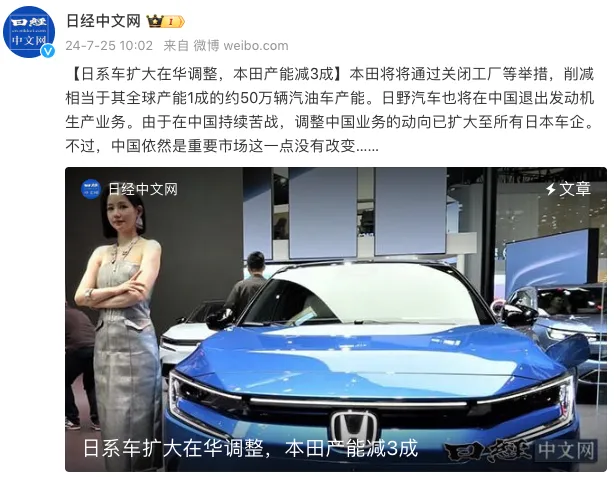
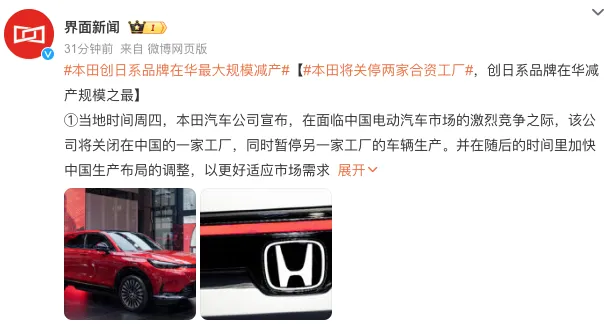
The Chinese market is currently Honda’s largest production base. After this production reduction, the annual production capacity of Honda’s fuel vehicles will be reduced from the original 1.49 million to 1.2 million. In response, a spokesperson for Honda said that this adjustment is part of Honda’s response to changes in the Chinese market, and Honda hopes to optimize its output in China through this measure.
It should be noted that before closing the factories, Honda has already started layoffs in China. In May this year, multiple media reported that GAC Honda launched large-scale layoffs in the form of step-by-step notification, and the scale is expected to be in the thousands. Insiders said that this is an overall layoff involving multiple lines. At that time, GAC Honda responded by saying: “In order to ensure the company’s sustainable operation and accelerate the strategic transformation, GAC Honda will further improve the efficiency of personnel. The measures include that some employees in the production field will not renew their first labor contracts upon expiration and voluntarily negotiate to terminate the labor contract, etc.”
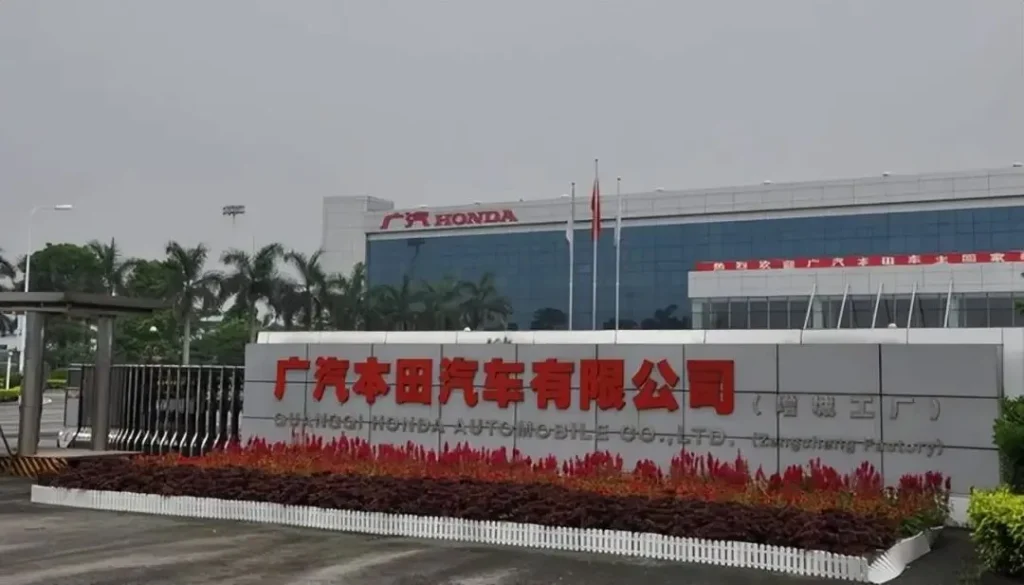
Official data shows that in the first half of this year, Honda’s cumulative sales in China was 415,906 units, a year-on-year decline of 21.48%. Among them, in January, Honda’s sales in China increased by 57.28% year-on-year to 100,960 units, and the sales from February to June all declined by double digits year-on-year, which were 38.63%, 26.32%, 22.18%, 34.66%, and 39.04% respectively. Regarding the reason for Honda’s decline in sales in China, people in the industry believe that the main reason is that Honda’s fuel vehicles are difficult to sell and electric vehicles are not popular.
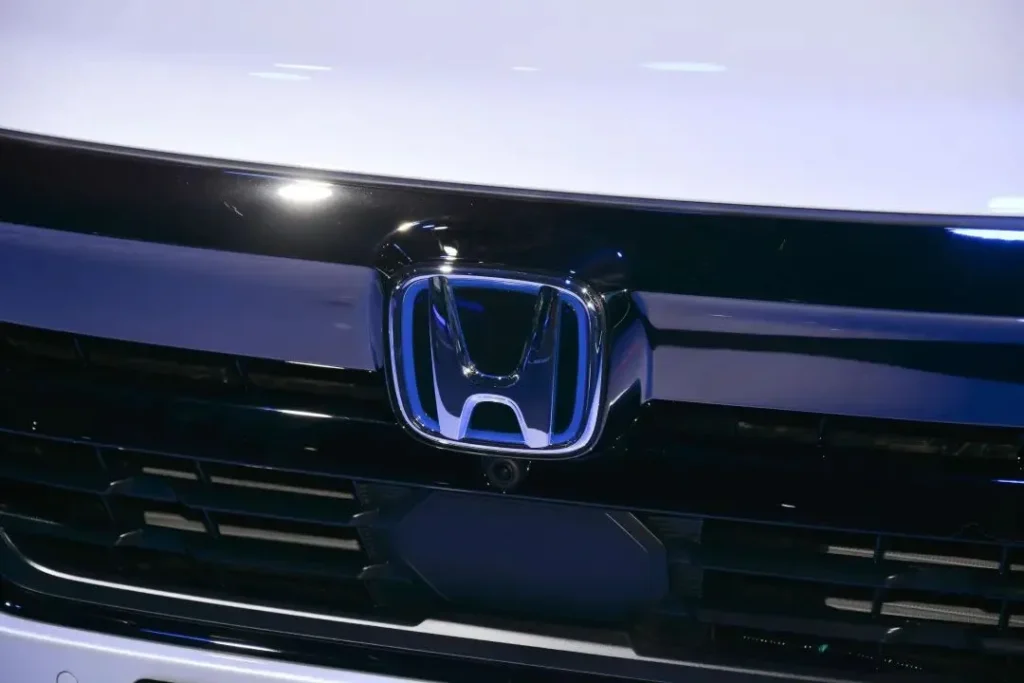
At present, Honda has two joint venture auto companies in China, namely GAC Honda and Dongfeng Honda. However, whether it is GAC Honda or Dongfeng Honda, the competitive pressure in the Chinese auto market has increased sharply, especially in the extremely competitive environment of new energy vehicles. The product power of fuel vehicles under the two joint venture auto companies has been significantly insufficient, and with the increase of products of the same level, resulting in Honda’s fuel vehicles in China not having much advantage in the auto market. And currently, the majority of Honda’s sales in China still come from fuel vehicles, which is also one of the reasons for the decline in Honda’s sales in China.
Taking the retail sales in June this year as an example, the highest-selling model of Honda in China is the Honda CR-V, with sales of 16,600 units; the Accord is second, with 12,000 units; the rest of the models are all less than 10,000 units, and the third-ranked HR-V is 8,841 units; the Civic and the INTEGRA are next, with 6,589 units and 6,000 units respectively.
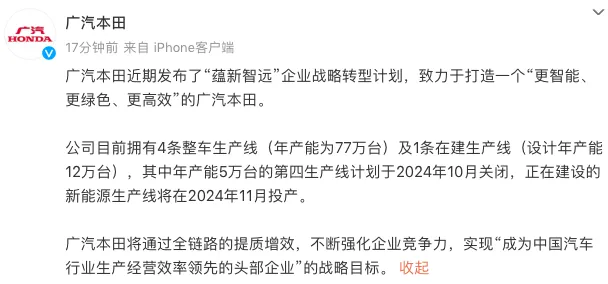
Of course, Honda’s performance in China is not an isolated case, but a microcosm of many Japanese joint venture auto companies. In the past, Japanese auto companies once overwhelmed domestic brands, but with the transformation of the auto market, the domestic electric vehicle has entered a stage of rapid development. The leading new energy brands represented by BYD are rapidly eroding the market share of fuel vehicles, especially joint venture fuel vehicles. In this context, Japanese auto companies are facing huge competitive pressure, and the situation of Japanese cars being “easy to sell” and “lying down and winning” has long gone.
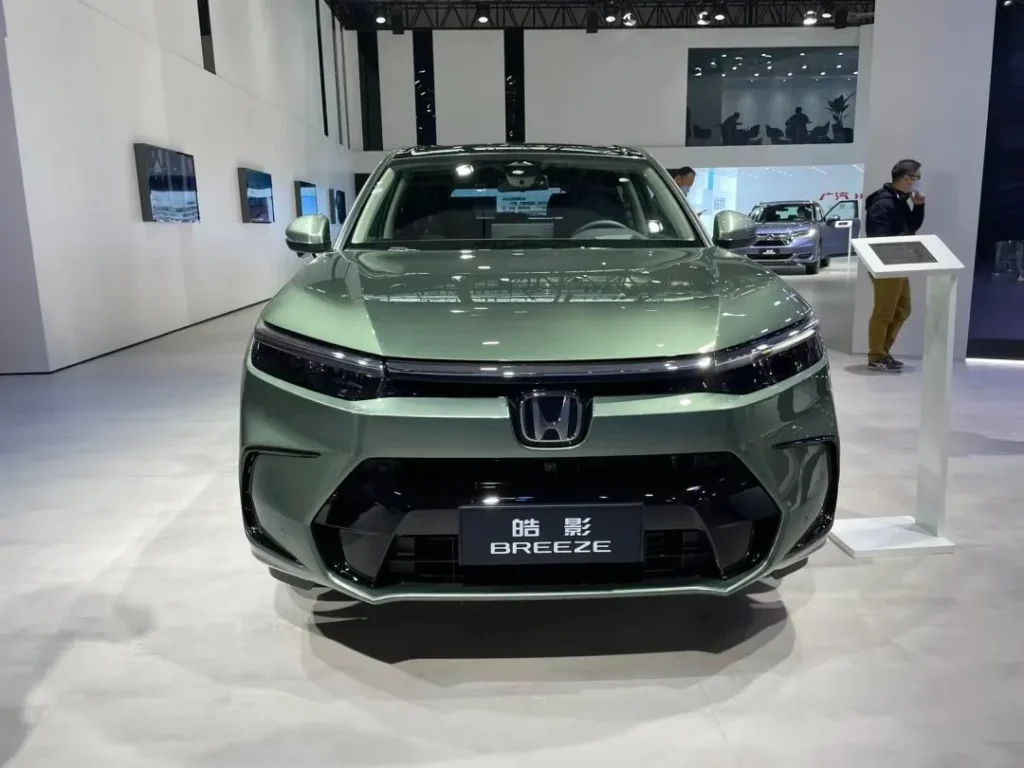
“Auto Industry Focus” believes that with the sharp contraction of the market share of fuel vehicles, joint venture brands with fuel vehicles as the main sales volume are facing problems of declining sales and excess production capacity. If the subsequent joint venture auto companies including Japanese brands do not hurry up to accelerate the electrification process, it may only be a matter of time before being eliminated from the market.
This time Honda closes two factories in China, which is actually to cut off the limb to survive. In recent years, many auto companies have begun to sell factories, and closures and transfers have also been continuously staged in the field of joint venture auto companies. According to reports from “Interface News”, after the suspension of production at Honda’s two factories in China, Honda plans to make up for this reduction by producing electric vehicle models through the two new electric vehicle factories being built, respectively, with its joint venture companies with GAC and Dongfeng. Honda’s goal is to start production in these two new factories later this year and is expected to restore the production capacity to 1.44 million units.
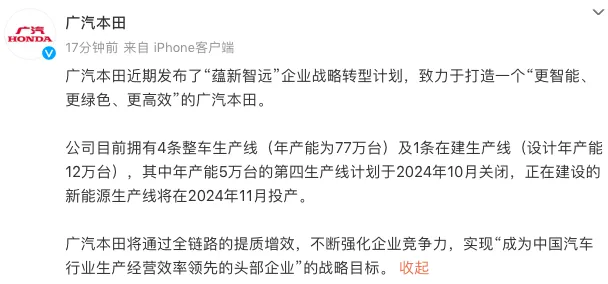
In the evening, GAC Honda posted on its official Weibo that GAC Honda recently released the “Yun Xin Zhi Yuan” corporate strategic transformation plan, dedicated to creating a “smarter, greener, and more efficient” GAC Honda. The company currently has 4 complete vehicle production lines (with an annual production capacity of 770,000 units) and 1 under-construction production line (with a designed annual production capacity of 120,000 units). Among them, the fourth production line with an annual production capacity of 50,000 units is planned to be closed in October 2024, and the under-construction new energy production line will go into production in November 2024. GAC Honda will continuously strengthen the company’s competitiveness through the improvement of the entire process to achieve the strategic goal of “becoming the leading head enterprise in the production and operation efficiency of the Chinese auto industry”.